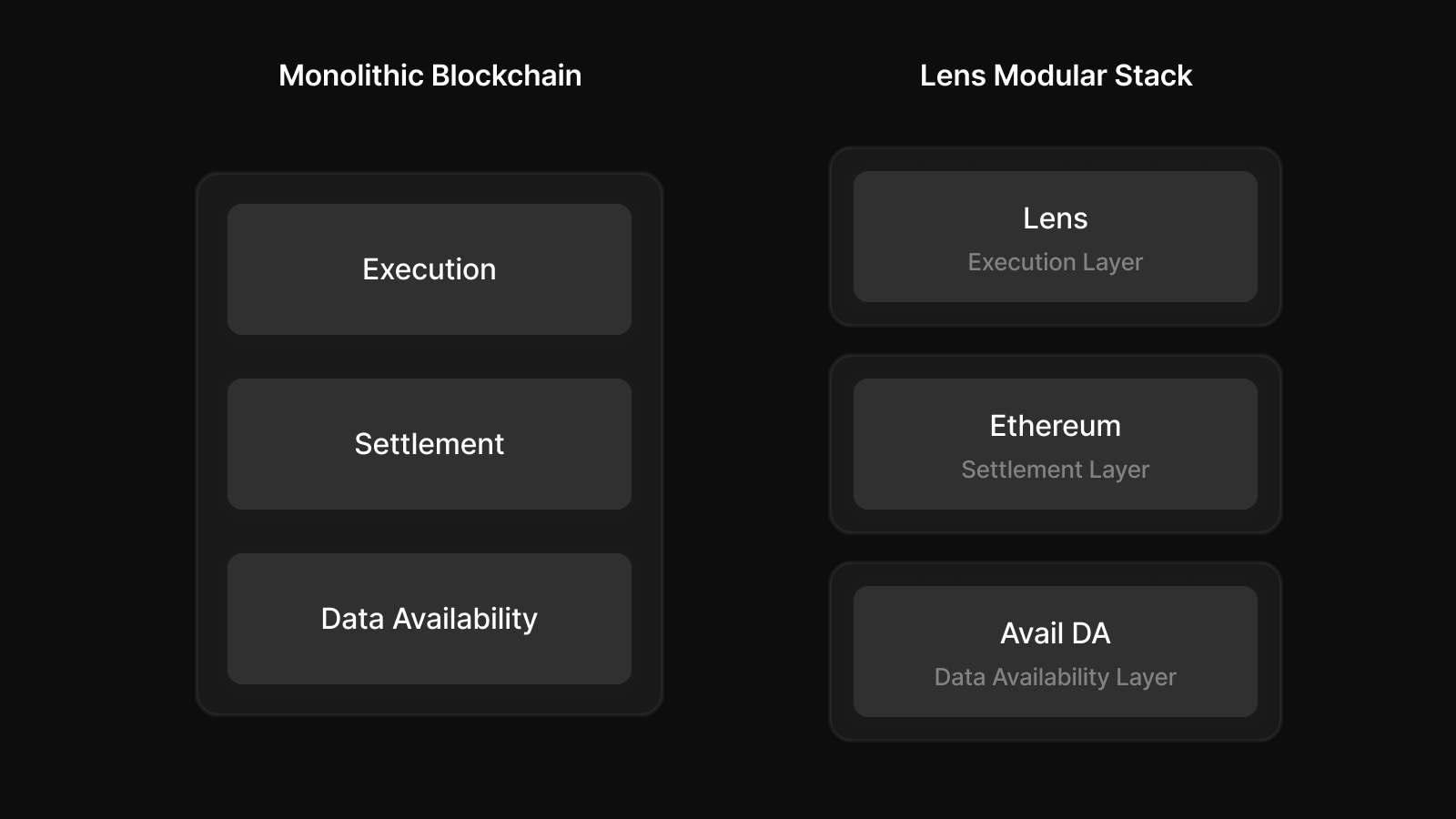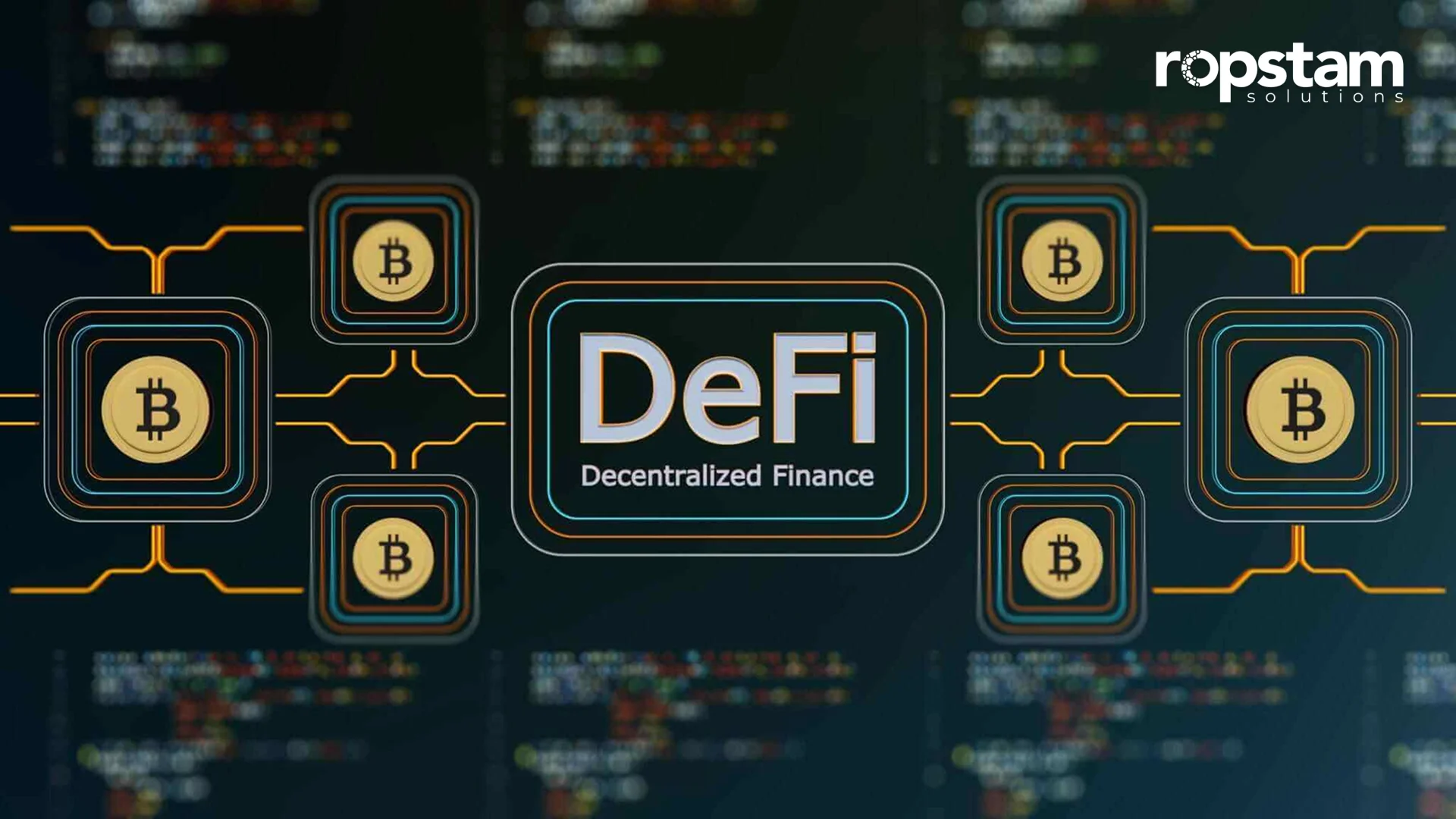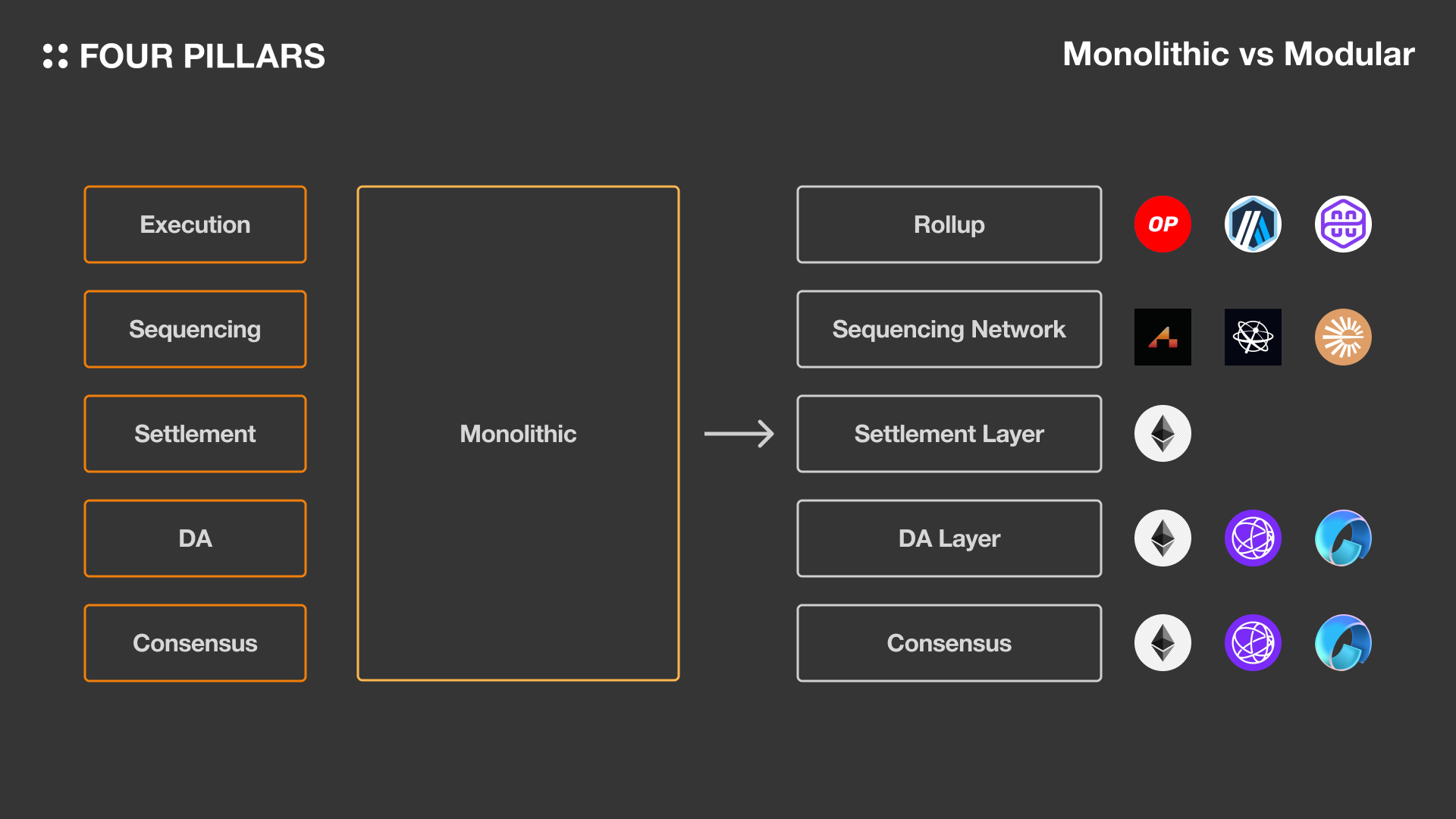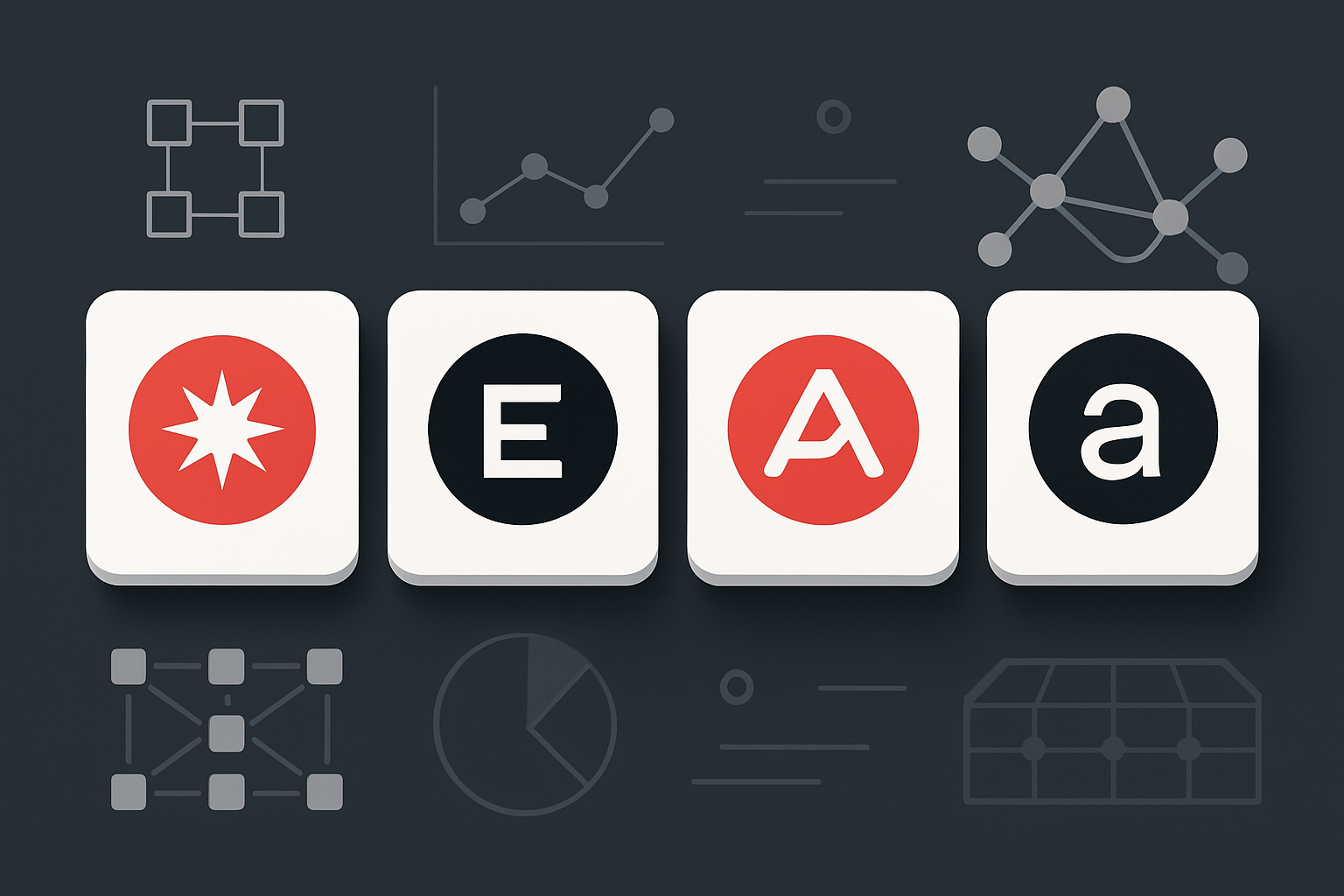
Decentralized finance (DeFi) has always promised a borderless, unified financial system. Yet in practice, DeFi liquidity and collateral have long been fractured across isolated blockchains and siloed protocols. The rise of modular data availability (DA) layers is now reshaping this landscape, unlocking seamless cross-chain collateralization and paving the way for a truly unified DeFi layer. Let’s break down how this modular revolution is happening, why it matters, and what it means for the future of capital efficiency.

The Modular Blockchain Paradigm: Breaking the Monolith
Traditional blockchains like Ethereum were built as monolithic stacks: execution, consensus, settlement, and data availability all bundled together. This design made sense for early networks but quickly hit scalability ceilings as DeFi exploded in popularity. Enter modular blockchain architecture, where each function is decoupled into specialized layers.
The data availability layer is arguably the most critical piece of this modular stack. It ensures that transaction data is published, accessible, and verifiable by anyone – a foundational requirement for secure rollups and cross-chain applications. By offloading data storage and verification to dedicated DA layers such as Avail or EigenDA, blockchains can scale execution without sacrificing decentralization or security.
This separation unlocks new design space: rollups can settle on different chains yet rely on a shared DA layer; application-specific chains can interoperate more freely; and developers are no longer constrained by the bottlenecks of single-chain architectures.
Unified Cross-Chain Collateral: From Siloed Assets to Shared Liquidity
The holy grail for DeFi has always been unified collateralization: using assets from one chain as collateral on another without convoluted bridges or custodial wrappers. Historically, users have had to lock up capital in different silos (Ethereum, Solana, Bitcoin L2s), fragmenting liquidity and reducing capital efficiency.
Modular DA solutions are changing this equation. By providing a common data foundation across chains, they enable protocols to verify asset ownership and state transitions regardless of where an asset originates. Projects like Syscoin leverage their modular stacks to ensure that liquidity on Edgechains remains composable – meaning BTC held on one chain can back loans or mint stablecoins on another without introducing new trust assumptions.
This shift isn’t just theoretical; it’s being actively implemented by projects such as Composable Finance and Mitosis Protocol. These teams build infrastructure that aggregates liquidity from multiple ecosystems using modular principles – allowing developers to launch dApps where users can move capital frictionlessly between networks for lending, trading, or yield strategies.
Why Data Availability Is the Linchpin for Cross-Chain DeFi
The magic behind all this interoperability lies in robust data availability guarantees. If every chain posts its transaction data to a shared DA layer (like Avail), then any protocol or smart contract on any connected network can independently verify what’s happening elsewhere – no need for centralized relayers or brittle bridges.
This model powers innovations such as:
- Cross-chain lending: Borrow USDC on Ethereum using native BTC from a Bitcoin rollup as collateral – all verifiable via the same DA layer.
- NFT-backed loans: Use NFTs minted on Polygon as collateral for loans issued on an entirely different EVM-compatible chain.
- Pooled vaults: LPs deposit into a single cross-chain vault (e. g. , via Mitosis), earning yield from multiple networks simultaneously without fragmenting their assets.
This isn’t just about technical elegance; it’s about unlocking billions in dormant capital trapped within ecosystem silos. As more protocols embrace modular DA-powered cross-chain collateralization, expect rapid advances in capital efficiency and risk management across DeFi’s ever-expanding universe.
One of the most exciting byproducts of this modular approach is the emergence of native asset collateralization across multiple chains, without the need for wrapped tokens or custodial intermediaries. Because data availability layers act as a universal source of truth, protocols can confidently accept native assets from any connected chain as collateral, with real-time verification and minimal trust assumptions.
This unlocks a new era for DeFi primitives. Imagine a scenario where your staked ETH on a Layer 2 rollup, your Bitcoin on a sovereign rollup, and even your NFT collection on Polygon can all be used as unified collateral to borrow stablecoins or participate in yield strategies across ecosystems. The composability is no longer limited by chain boundaries; it’s defined by the shared DA layer underpinning these networks.
Real-World Use Cases and Protocol Innovations
The practical implications are already visible in leading-edge projects. For example, Mitosis Protocol is weaving together liquidity pools from disparate chains into massive cross-chain vaults, enabling LPs to maximize yield without navigating bridge risks or fragmented interfaces. Composable Finance is pushing the envelope with “cross-ecosystem deployment, ” letting developers launch dApps that tap liquidity and collateral from anywhere DA layers reach.
Moreover, enterprise DeFi is beginning to leverage Bitcoin Layer 2 solutions for treasury management, moving capital between protocols to optimize yield and manage risk, all secured by modular DA infrastructure. This cross-chain agility is crucial for institutional adoption and will likely accelerate as more robust DA solutions come online.
Top Protocols Using Modular DA for Cross-Chain Collateral
-

Avail: Avail is a pioneering modular data availability layer dedicated to supporting scalable, secure cross-chain collateralization by powering diverse rollup architectures and enabling seamless interoperability across DeFi ecosystems.
-

Syscoin: Syscoin leverages modular DA to unify liquidity across its Edgechains, ensuring assets can be used as collateral across multiple networks without fragmentation, enhancing capital efficiency in DeFi.
-

Composable Finance: Composable Finance builds infrastructure that integrates modular DA layers, allowing assets and liquidity to flow freely between blockchains and empowering developers to create true cross-chain DeFi applications.
-

Celestia: Celestia provides a modular DA layer that enables secure, scalable rollups and cross-chain collateralization, making it a foundational component for next-generation unified DeFi protocols.
-

Mitosis: Mitosis acts as a cross-chain liquidity hub, pooling assets into massive vaults and leveraging modular DA to enable unified collateralization across diverse blockchain environments.
Risks, Challenges, and the Road Ahead
Of course, innovation brings its own set of challenges. Security remains paramount: while modular DA layers reduce many risks associated with traditional bridges, they introduce new attack surfaces around data withholding or censorship at the DA layer itself. Protocols must implement robust cryptoeconomic incentives and fallback mechanisms to ensure continued data availability, even in adversarial scenarios.
Another challenge lies in standardization. As more chains adopt modular architectures, interoperability standards (for proofs, state transitions, asset registration) become essential for seamless cross-chain collateralization. Industry consortia and open-source collaborations are actively working on these standards to prevent fragmentation at the modular layer itself.
Despite these hurdles, the trajectory is clear: modular data availability layers are rapidly becoming the foundation for unified DeFi liquidity. The vision of frictionless capital flows, where users can deploy assets wherever opportunity arises without technical or trust bottlenecks, is finally within reach.
If you want to dive deeper into how this technology powers seamless liquidity aggregation across blockchains (without relying on bridges), check out our guide on how modular data availability layers power cross-chain DeFi.
The next wave of DeFi will be built not just on smart contracts but on smart coordination between specialized layers, where data availability sits at the heart of an open, efficient financial system that truly spans all chains.






